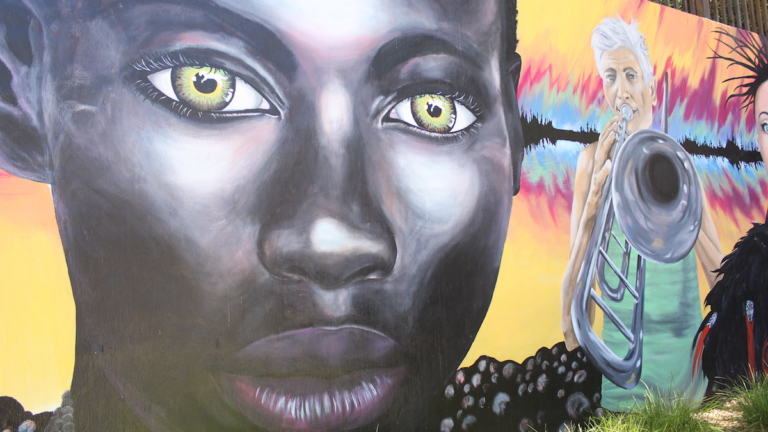By Rachel Bluth, KHN
It took covid-19 to give millions of Americans the option of telling their doctor about their aches and pains by phone.
But now that more doctors and patients are returning to in-person appointments, policymakers across the country are divided over how much taxpayer money to keep spending on phone appointments. Although they were a lifeline for Medicaid and Medicare patients who don’t have the technology for video visits, critics say they don’t provide the same level of patient care and aren’t worth the same price.
In California, the Democratic-controlled legislature wants the state’s Medicaid program for low-income people — called Medi-Cal — to keep paying for phone calls at the same rate as for video and in-person visits, a policy that began during the pandemic. But Democratic Gov. Gavin Newsom’s budget plan directs Medi-Cal to reduce the rate.
Medi-Cal paid for a whopping 2.4 million phone appointments from March 1, 2020, to April 30, 2021, according to the state Department of Health Care Services.
“Prior to the pandemic, audio-only visits weren’t a thing,” said Chris Perrone, director of the California Health Care Foundation’s Improving Access team. “No one considered them telehealth.” (California Healthline is an editorially independent publication of the foundation.)
The federal Medicare program — which covers older Americans and people with disabilities — and most state Medicaid programs rarely paid for phone visits before the pandemic. But after doctors shuttered their offices last year and patients stayed home, Medicare and nearly every state Medicaid program began paying for phone visits when it became clear that many patients didn’t have access to video. More private insurers began counting phone calls as telemedicine visits, too.
The use of audio and video appointments — generally known as telehealth — has exploded during the pandemic. In California, there were about 10,500 telehealth visits a week per 100,000 Medi-Cal patients in 2020, compared with about 300 in 2019, according to the state Department of Health Care Services.
Medicare saw a similar explosion. Before the pandemic, about 17,000 enrollees used telemedicine each week. That shot up to 1.1 million weekly during the pandemic, according to a Medicare spokesperson.
While most state Medicaid programs began paying for phone visits during the pandemic, they are weighing how to proceed as it wanes. New Hampshire passed a law in March 2020 requiring Medicaid and private plans to pay for phone visits at the same rate as video and in-person visits. This March, Vermont extended emergency rules to pay for phone visits at the same rate as other types of appointments through 2022, and a state working group recommended keeping them permanently. Connecticut, Delaware, New York, Colorado and other states passed laws that define phone visits as telehealth, and all are continuing to pay for them to varying degrees.
Congress held hearings in April to determine whether Medicare should keep paying for phone visits, which it started doing in March 2020 but is set to stop after the federally declared public health emergency ends. A nonpartisan legislative agency has recommended extending the payments for a year or two after the emergency.
Because audio appointments are new, there’s little evidence on quality. The California Health Benefits Review Program analyzed studies on the effectiveness of telehealth and found that, generally, telephone visits were “at least as effective as in-person” ones. The few studies that directly compare video and audio visits looked at behavioral health care and determined that outcomes were about the same.
Phone visits were important to Taryn Keane, 63, who lost her job as a massage therapist in Venice, California. Keane can’t afford internet service at home and didn’t have a laptop until the Venice Family Clinic gave her an old one and a Wi-Fi hot spot so she could participate in patient forums.
Still, Keane doesn’t like video calls. She has dental problems that make her uncomfortable showing her face on video and a learning disability that makes it hard to focus if there are too many visual distractions. It was easier for her to talk through her mental health issues, and get consultations before and after wrist surgery, over the phone.
“I’m not good on the computer,” Keane said. “It’s just another uncomfortable barrier for me.”
California lawmakers are debating a bill, AB 32, that would require Medi-Cal to keep reimbursing phone, video and in-person visits at the same rate in most settings. The measure, passed by the state Assembly, is now being debated in the Senate and as part of budget negotiations.
An analysis of the bill from the California Health Benefits Review Program found evidence that patients of color and those who are older or rural were more likely to use phone visits than video visits during the pandemic.
“It’s obvious that video [appointments] will not be going to all rural residents and seniors anytime soon,” said state Assembly member Cecilia Aguiar-Curry (D-Winters), author of the measure. “My No. 1 goal is to have access for all.”
Doctors at safety-net clinics that serve Medi-Cal enrollees and uninsured people report that phone visits have been instrumental in keeping patients healthy during the pandemic. They have proved effective with patients with behavioral health issues like substance use disorders, and those with chronic diseases like diabetes, which require monthly check-ins.
Dr. Grace Floutsis, CEO of White Memorial Community Health Center in Los Angeles, used video and phone appointments for the first time during the pandemic. Like all federally qualified health centers, White Memorial generally wasn’t allowed to use telehealth until then.
“What surprised us the most was how many more people had access to care because that was provided,” Floutsis said. “I’m not sure that changes that much after the pandemic.”
Patients have stopped skipping appointments, she said. The no-show rate for pediatrics (now in person) is higher than for adult primary care (still virtual). The no-show rate for behavioral health, once high, has dwindled to nearly zero.
California’s Department of Health Care Services argues that phone appointments aren’t as good as in-person or even video visits and wants to pay for some phone visits at 65% of in-person or video rates, beginning July 1 or when the federal public health emergency ends.
“There are inherent limitations on the types of services and quality provided,” department spokesperson Tony Cava wrote in an email. “They are not typically viewed as equivalent to in-person visits, do not require the same level of resources to manage, and special equipment or broadband internet connections aren’t required.”
Despite multiple requests, the department did not provide data on how much it paid for phone appointments during the pandemic.
Under the department’s proposal, it would no longer pay for phone appointments at community health centers because the health centers receive a flat rate for every visit by a Medicaid patient. The department left the door open to work with health centers and the federal government to pay some amount for audio visits in the future.
The average community clinic appointment in California is reimbursed at $215, but some can be several hundred dollars.
“While I think it’s a really valuable service, I don’t think it’s a really valuable service at that cost,” said Assembly member Jim Wood (D-Santa Rosa), who chairs the Assembly Health Committee.
His committee discussed cost in April when it considered AB 32, the bill to keep rates for phone visits equal to the rates for other visits, and amended it to stop reimbursing audio visits at community clinics altogether after five years.
West County Health Centers in Sonoma County is already losing money on phone appointments for Medicare patients, and will take an even bigger hit if Medi-Cal cuts rates, said CEO Jason Cunningham.
But ending phone appointments completely isn’t an option, he said. Phone calls allow patients to conference in family members, eliminate travel time for patients in remote parts of the county, and enabled clinics to keep operating when their buildings were closed for wildfires last summer, he said.
“How can I ask someone to drive an hour to see me, wait in the waiting room for 20 minutes and drive an hour back home when their neighbor with a laptop can see me virtually?” he asked.
This story was produced by KHN, which publishes California Healthline, an editorially independent service of the California Health Care Foundation.


























